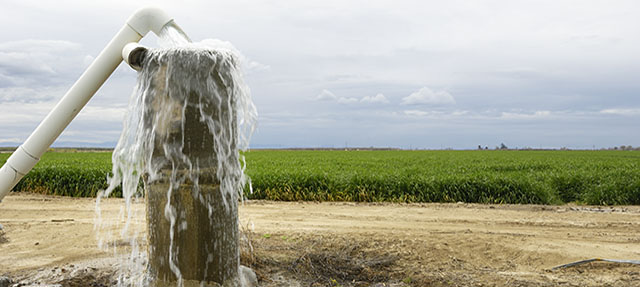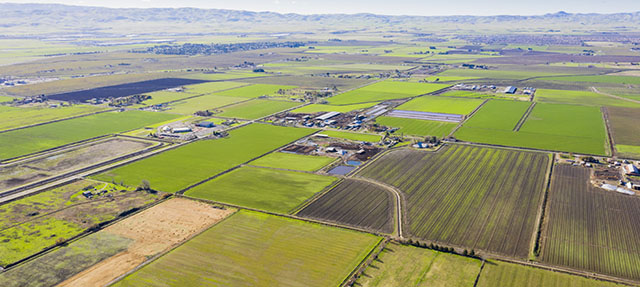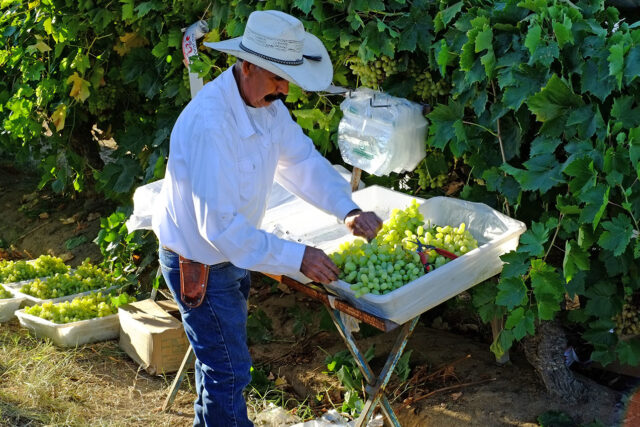Efforts to find solutions to the state’s groundwater depletion issues took a new turn when groundwater agencies for the state’s 21 “critically overdrafted” basins submitted their first groundwater plans in January. Last week the PPIC Water Policy Center held a webinar to summarize our in-depth review of plans for 11 of these basins in the San Joaquin Valley—California’s largest farming region, where excess pumping is a major challenge.
“Our goal is to help build a shared understanding of how well these plans tackle core objectives, and to help further a conversation about how everyone can work together to achieve success and manage water resources in a way that’s going to build a strong foundation for the future,” said center director Ellen Hanak in her opening remarks.
PPIC research associate Jelena Jezdimirovic laid out important context and summarized key findings of the review. She began by describing the costs to the agricultural sector of ending overdraft in the valley—and how these costs can be mitigated by flexible water management and cost-effective new supplies.
Given the variable water supply conditions across the valley, a key concern is that it will be harder for areas that lack available surface water to address overdraft. “The take-home message is that, ideally, the solutions to overdraft would look regionally at where water is needed, where it’s available, and then consider how to move it around in a cost-effective way to benefit everyone in the valley,” said Jezdimirovic.
As for new supplies to fill the gaps, the plans’ localized approach revealed some blind spots. “The emphasis is really on supply solutions” rather than reducing demand, she said.
Jezdimirovic noted that the plans are overall too optimistic in their proposals to use floodwaters to restore groundwater supplies—with proposals to capture about twice as much floodwater as PPIC estimates might be feasible and affordable.
“Any single one of these [supply] projects might be completely reasonable and sound in its yield estimates, and could really help the area where it’s planned. But when you put all of these projects together and look at the entire valley, the numbers for supply expansion just don’t add up,” she said.
Too many of the plans lack protections for shallow drinking water wells, which have been going dry in years when pumping is high. SGMA requires plans to set thresholds that protect domestic wells or mitigate the effects when they go dry due to excess pumping. PPIC’s review found that some plans acknowledge significant impacts to local wells from ongoing overdraft but do not include protections for domestic wells. “There’s a real need to figure out how to address the safe drinking water challenge,” said Jezdimirovic.
A related issue is the ongoing problem of land subsidence, which would be allowed to continue at high rates by some of the plans. “The land sinking caused by groundwater overdraft can harm infrastructure, like water conveyance,” said Jezdimirovic. More work is needed to reduce subsidence, which has already damaged key elements of the state’s water system as well as roads, bridges, and other infrastructure.
Hanak emphasized “the importance of piloting promising new approaches” to resolve these problems and the need to “look beyond local plan boundaries” in ways that foster collaboration, both within and across basins. “Taking baby steps toward finding out what works will be really valuable,” she said.
We invite you to watch the event video, and to explore the following related resources:
- PPIC’s blog series on the groundwater plans
- A Review of Groundwater Sustainability Plans in the San Joaquin Valley, public comments submitted by PPIC to the California Department of Water Resources.
- Datasets related to the review.





